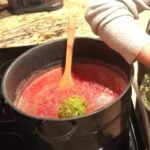Related Recipes
-
How to Make and Can Homemade Chunky Salsa
By Kawther
-
How to Make Kosher Dill Pickles with Mrs. Wages
By Kawther
-
Canning Sweet Potatoes: A Step-by-Step Guide
By Kawther



















